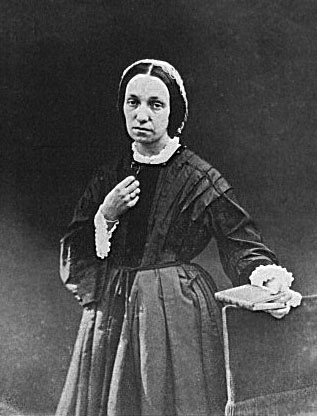In a previous blog I looked at G. F. Watts’ memorial statue of Tennyson, but he is perhaps best remembered for his portraits.
He did not set out to become a great portrait artist and when he was studying in Italy he is reported to have said, ‘Nature did not intend me for a portrait painter’. Whatever Nature may or may not have intended, the fact remained that when he felt an affection for his subject, he was a very good portrait artist. Thus, when he moved back to England in the 1850s, he set up a studio in Mayfair and painted portraits. It was here that he painted two of the Pattle sisters, Miss Virginia Pattle and Mrs Sara Prinsep.

Watts’ relationship with the Pattles was an important influence in his life. In one of the other Pattle sisters, Julia Margaret Cameron, he found a friend and a fellow artist. It was while he was living in Holland House with Sara and Thoby Prinsep that he met both his first wife, the actress Ellen Terry, and one of his lifelong friends, Alfred Tennyson. We know that Sara introduced him to Ellen, though she may not have entirely approved of the match, and it is likely that she also orchestrated the introduction to Tennyson.
Soon after marrying Ellen in February 1864 the newlyweds visited Tennyson at Farringford and Cameron at Dimbola Lodge. They were both very happy for a while at Farringford; Watts had his dear friend to talk to and the seventeen-year old Ellen had Tennyson’s sons to spend time with. Though she was a married woman, she enjoyed running through the grounds of Farringford with Hallam (twelve years old) and Lionel (ten years old). Watts and Ellen both enjoyed going out walking with Tennyson. He knew the area well and would draw their attention to beautiful views and points of interest. Despite their happiness during this visit, the marriage was not to last and she eloped with another man after only ten months of marriage.
Watts’ divorce was not final until 1877, by which time he had built The Briary on the Isle of Wight for his friends the Prinseps. He also built it so he would have a place to stay that would be close to Tennyson and Cameron. Watts moved to the Isle of Wight in 1871 after his lease on Holland House ended. He built The Briary in 1873.
Living on the Isle of Wight would have allowed Watts to escape some of the scandal attached to divorce in Victorian England. More importantly, though, it gave him a sanctuary surrounded by friends in which he could recover from the emotional turmoil that followed the breakdown of his marriage.
This sanctuary also gave him a congenial place to work. He was surrounded by artists. Tennyson and Cameron were permanent residents and close friends. They and the charms of Freshwater Bay attracted other artists to visit. Among these visitors were writers, the Rev. Charles Dodgson (better known as Lewis Caroll) and Arthur Hugh Clough; painters, John Everett Millais and William Holman Hunt; and musicians, Jenny Lind and Arthur Sullivan (of Gilbert and Sullivan).
While living at The Briary Watts painted both portraits and landscapes. Though his time there was happy and productive, he had left and moved to Surrey by the time he re-married in 1886. When I next write about Watts I’ll examine a few of his paintings, both some of his portraits of Tennyson and some of the larger scale works he preferred to paint. What is your favourite painting by Watts?